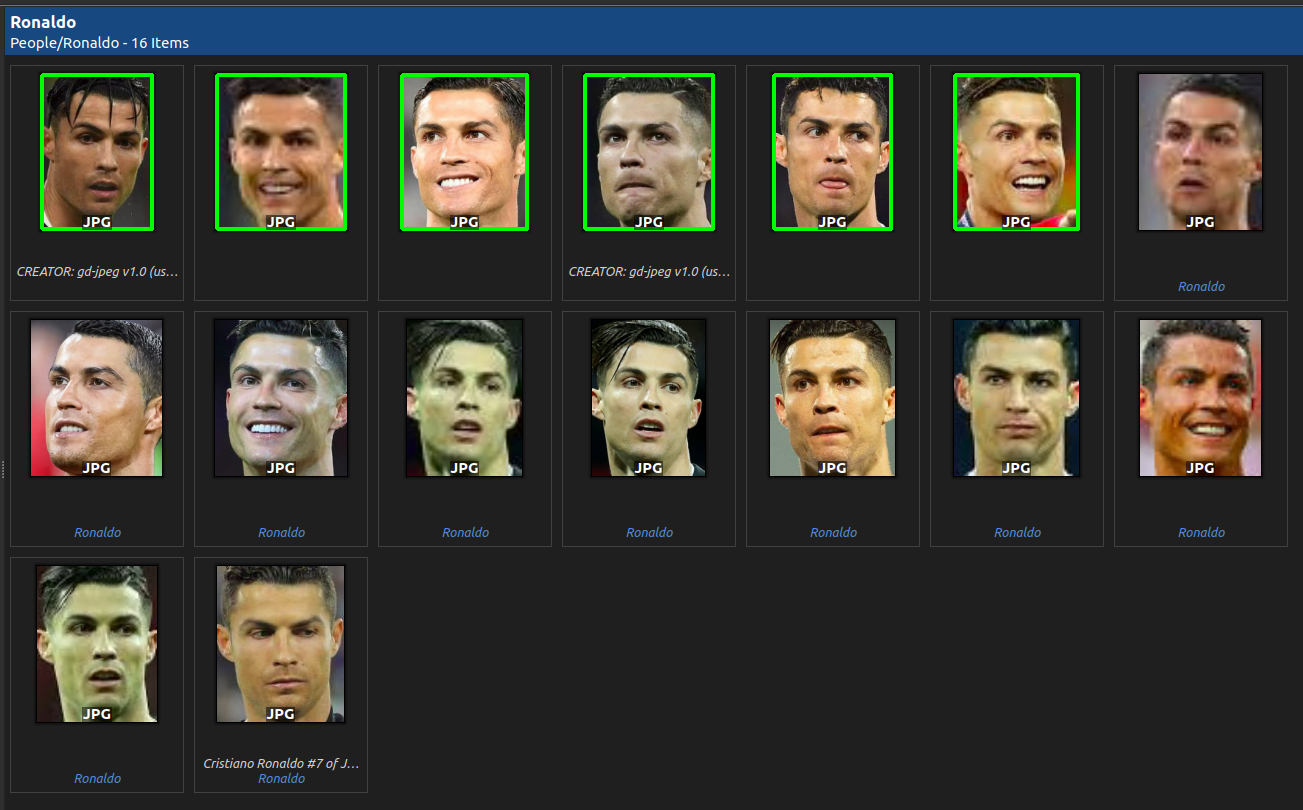

- #DIGIKAM RECOGNIZE FACES FULL#
- #DIGIKAM RECOGNIZE FACES SOFTWARE#
- #DIGIKAM RECOGNIZE FACES FREE#
- #DIGIKAM RECOGNIZE FACES WINDOWS#
After I did that, it looks like this: digiKam - With the Obsidian Coast Theme It’s pretty easy, you just go to Settings->Theme. So my first order of business was to try and rectify that situation.
#DIGIKAM RECOGNIZE FACES FULL#
Lightroom purposely chose those colors because full white or full black would taint your perception of the colors of your photos. So, first of all, on the blog posts and digiKam’s own website it has the same cool dark greys as Lightroom. If you ignore the cosmetic differences you’ll see that they’re essentially presenting the exact same information. Here’s what digiKam looks like when I open it: digiKam - startupĪnd here’s what Lightroom looks like when I open it: Lightroom - startup For my entire library is took a few hours for Lightroom to write all the tags. So I just deleted them and added them back in after I saved the tags. I hadn’t done that with my oldest images and when they ended up in digiKam, they didn’t have any tags.

That writes the title, description, tags, etc to the file.

Usually with all the photos I’ve taken since getting Lightroom, whenever I add in tags or export to JPEG I always highlight all the files and hit control-S. Depending on how you use Lightroom, the tags might not be embedded in the JPEG (or other file) metadata. One important thing for Lightroom users (and this also probably applies to Apple’s product, Aperture): Let’s say you want to preserve your tagging so that you don’t need to recreate that when moving your collection over from Lightroom to digiKam. That would make nepomuk VERY useful to me so that I could search for a photo without even needing to open digiKam. One thing I haven’t tested yet, is that I HOPE (since I use KDE) that nepomuk is able to swallow up the metadata like tags, locations, etc from digiKam.
#DIGIKAM RECOGNIZE FACES WINDOWS#
(I tend to leave my Windows computer off if I’m not working on photography or playing video games) And if they’re going to be there for GRAMPS, I may as well have them in a photo management program like digiKam so that I don’t need to turn on my Windows computer to look up where a photo of my brother might be. GRAMPS is an AWESOME genealogy tool available on Linux. 1) I can probably provide some great insight into where it’s going well and where it’s falling behind compared to Lightroom 2) I am copying my photos (just the JPEGs because I shoot RAW and that would take up too much space) to my Linux computer for use in GRAMPS. However, I am investigating using digiKam on Linux for two reasons. And it’d be silly for me not to go with best of breed technology for my passion. But photography is a very technical, hard thing to program well.
#DIGIKAM RECOGNIZE FACES SOFTWARE#
Yet other bits of libre software provide ALMOST everything that the Closed Source version does – Libre Office or Blender. Others, like Firefox, took something that already existed and made it better. Some of them, like Compiz have been innovations that the Closed Source have borrowed.
#DIGIKAM RECOGNIZE FACES FREE#
Libre Software (aka Free and Open Source) has done some pretty amazing things. The only time I use Photoshop now is when I need to do something complex like a collage or other bit of art that involves mashing together more than one photo.īecause photography is so important to me (the most important thing outside of family and religion), I foresee myself always using Lightroom in the near future. It is my go-to program for nearly 100% of what I do with photos. Lightroom is an amazing piece of software engineering. On my Windows computer I do this with Lightroom, Adobe’s photo management software. I tag my photos with as many relevant tags as possible so I can easily find photos of my brother, for example, in the future. That said, after having been involved in the semantic world via flickr, I’ve found tagging to be invaluable. It would be somewhere like 2010->Jan 10->So and So’s Wedding. 2) it’s very easy for me to very quickly find a photo. However, I’ve found that my system has two main benefits 1)my photos remain organized even if my descendants don’t have access to programs that can read the metadata on the photos. Eventually, software like Picassa, Lightroom, and digiKam came out which would have allowed me to continue to to organized my photos by event because they could read the metadata and reorganize them by date. Once I realized that’d quickly get unwieldy, I decided to put them in folders by date.

Because I’m an organized person, I started off putting my photos into event-based folders. Ever since I got my first digital camera in my second semester of college, the number of photos I’ve taken yearly has increased nearly exponentially. I have about ten photo albums, with most of them coming from when I got to high school and could really afford film and developing. That’s when I got my first Kodak Instamatic camera and started shooting photos and creating photo albums. As I’ve mentioned before on this blog, I’ve been into photography since I was five years old.


 0 kommentar(er)
0 kommentar(er)
